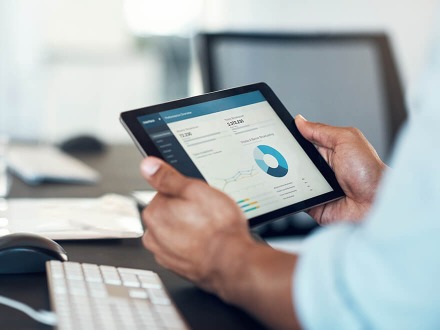What Is Cybersecurity Analytics?
McAfee, the leading cybersecurity software defines security analytics as 'a combination of software, algorithms and analytic processes used to detect potential threats to IT systems.' Because network conditions are constantly in flux, you can't rely on security information and event management systems (SIEMs) alone to keep your data safe.The key word in that definition, then, is 'potential.' You need systems in place to detect threats before they cause damage, and that's precisely where security analytics steps in.
Benefits of Cybersecurity Analytics
It's good to have a definition of cybersecurity analytics, but it may be even more helpful to explore some of the benefits more directly. Here are a few that your organization may be able to take advantage of:1) Regulatory Compliance
One of the most significant benefits of cybersecurity analytics is the ability to pull data from disparate sources. This allows for accurate reporting when assessing regulatory compliance. Some organizations are under strict regulations ' such as HIPAA and PCI-DSS ' which require monitoring and reporting for regular auditing. Tools such as Diligent Compliance make it possible to demonstrate real-time risk monitoring with detailed, centralized recordkeeping.
2) Proactive Threat Detection
Conventional cybersecurity methods may allow malware to go undetected for a long time, eventually reaching a point of inevitable data loss. Threats that are anticipated ahead of time, however, can be neutralized before they do any damage.
3) Rapid Alert Response
Cyber-attacks that do manage to land are detected more quickly, sending alerts and allowing automated systems and security professionals to respond faster.
4) Enhanced Forensic Capability
Cybersecurity analytics helps with forensics by providing insight as to the origins of attacks, vulnerabilities, compromised resources, attack severity and much more. This information, in turn, becomes useful for detecting future threats and preventing similar situations going forward.
5) Incident Prioritization
Data from McAfee shows that IT professionals ignore about 30% of security alerts due to the number of false positives. Cybersecurity analytics tools can prioritize alerts, ranking them by severity so that security teams know what needs to be addressed first.
6) Attack Impact Reduction
Because your security experts can respond to threats more quickly, successful attacks can be dealt with before they do too much damage, effectively minimizing their impact.
7) Cybersecurity Analytics Use Cases
It's not hard to see how businesses with highly sensitive data on hand, such as healthcare providers, finance companies and government institutions, can reap tremendous benefits from using data to anticipate security threats. Like cybersecurity as a whole, however, organizations in any industry are likely to have at least one of the most common use cases:
8) Cloud Security Monitoring
The widespread adoption of cloud computing and storage adds another layer of complexity to maintaining cybersecurity visibility. Data and analytics ' combined with communication between organizations and service providers ' help boards to ensure that important data and systems are as secure as possible, even when leveraging cloud services.
9) Insider Threat Detection
According to the 2020 Data Breach Investigations Report, at least 30% of data breaches were caused by internal actors. Cybersecurity analytics helps to expose unscrupulous behavior before it becomes a significant threat.
10) Network Traffic Analysis
It's no secret that most cyberattacks arrive through the internet, but what may not be as well-known is that the vast majority of malware is delivered via email. Monitoring network traffic and ensuring proper training may be the best defense against malware for your board and your organization.
11) Vendor Risk Assessment
There are many risks associated with trusting workloads to third parties, not least of which is cybersecurity. In fact, third-party software is among the highest-ranking initial threat vectors for harmful data breaches. Tools such as Diligent's Cyber Risk Scorecard offer organizational data as well as charts and action items that can help assess vendor risk.
12) Data Governance
With nearly 90% of data breaches being financially motivated, it's clear that the phrase 'data is an asset' is more than a mere aphorism. Boards and organizations must systematically and effectively approach data governance to remain operational in the long term.
13) Incident Investigation
If you don't understand the causes of a particular incident, it's difficult to eliminate the threat or prevent something similar from happening in the future. Every incident should be thoroughly investigated using data analytics so that your cybersecurity system evolves, eliminating blind spots in both remediation and threat detection.
14) Threat Hunting
Threat hunting is a proactive means of anticipating and neutralizing threats before they cause damage based on previously collected data. Without analytics on some level, this discipline would be all but impossible.





